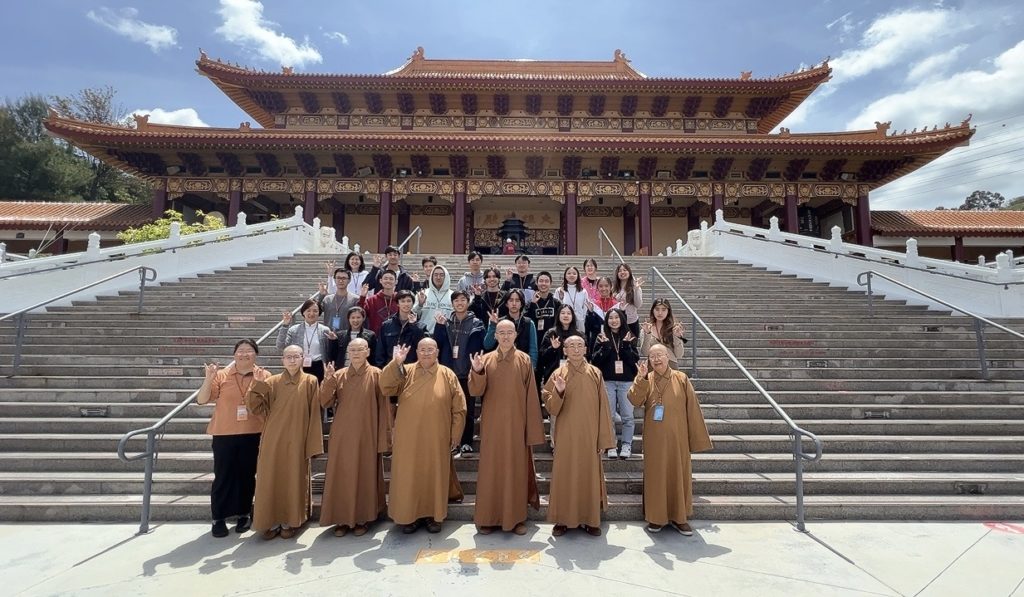
On Saturday, May 6, the Fo Guang Shan International Translation Center (FGSITC) Buddhism Friendship Scholarship hosted its second workshop for the 2023 year at Hsi Lai Temple in Hacienda Heights, California. All seventeen of this year’s scholarship recipients attended, along with various Fo Guang Shan monastics and community members.
Each semester, the FGSITC Buddhism Friendship Scholarship requires students to participate in two Buddhism workshops, write a book report on a selected text, and make a talent contribution to FGSITC.
This recent workshop included several classes: (1) an introduction to meditation; (2) the history of Fo Guang Shan (Buddha’s Light Mountain) and its founder, Venerable Master Hsing Yun (1927–2023); (3) teachings on the four immeasurables and the four givings. Scholarship recipients attended a short speech by Venerable Hui Dong, the abbot of Hsi Lai Temple. After a vegetarian lunch at the Dining Hall, they were given a tour of Hsi Lai Temple, and then individual scholarship recipients participated in a storytelling activity, the final event of the workshop.
Venerable Hui Dong gave a speech with words of encouragement: Buddhism teaches us to be calm in our surroundings and how to handle conflict. It teaches us to self-reflect and self-evaluate in order to gain wisdom. We volunteer to help others, but we also help ourselves by building good affinities.
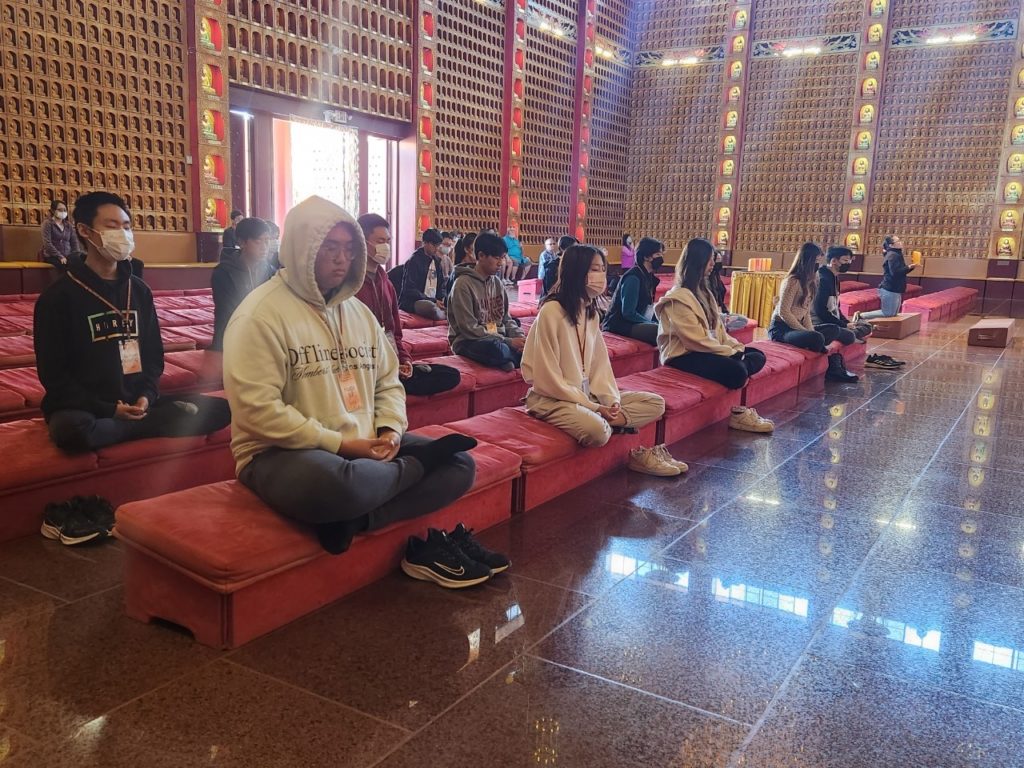
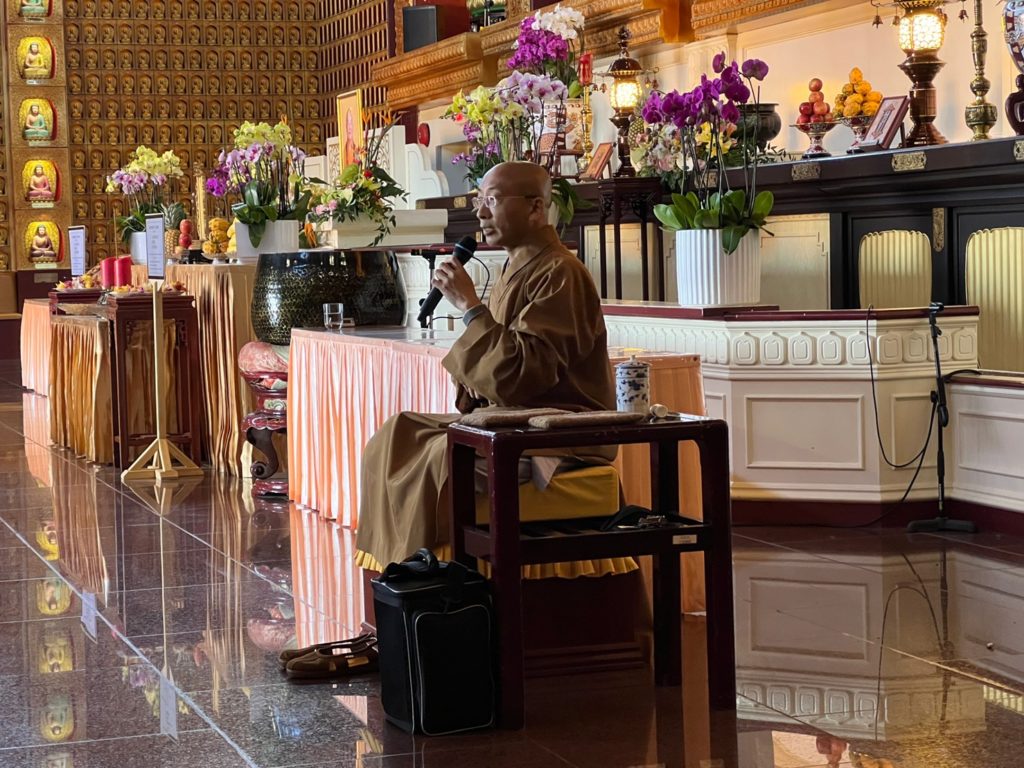
Venerable Hui Shuian, the director of the Art Gallery at Hsi Lai Temple, taught a meditation class for beginners: He explained the foundation of meditation and breathing methods. These skills help bring relief from the fatigue and over-exertion of daily life, for example, eye strain from looking at screens, over eating, or physical stress. By using these methods of breathing and meditation, we will surely feel the benefits!
Venerable Miao Hsi, the director of Buddha’s Light Publications, gave a lecture on “Master ‘Star and Cloud’ and Buddha’s Light Mountain,” an introduction to the founding father of Fo Guang Shan through the history of his name. The Venerable Master’s name, Hsing Yun (Star Cloud), was originally from a poem he read in which he admired the infiniteness and boundlessness of the nebulas and wished that he could shed light on darkness and be as free and unbound as clouds and stars. When Venerable Master needed a new identification card after China’s victory over Japan, he gave himself the Dharma name of Hsing Yun.
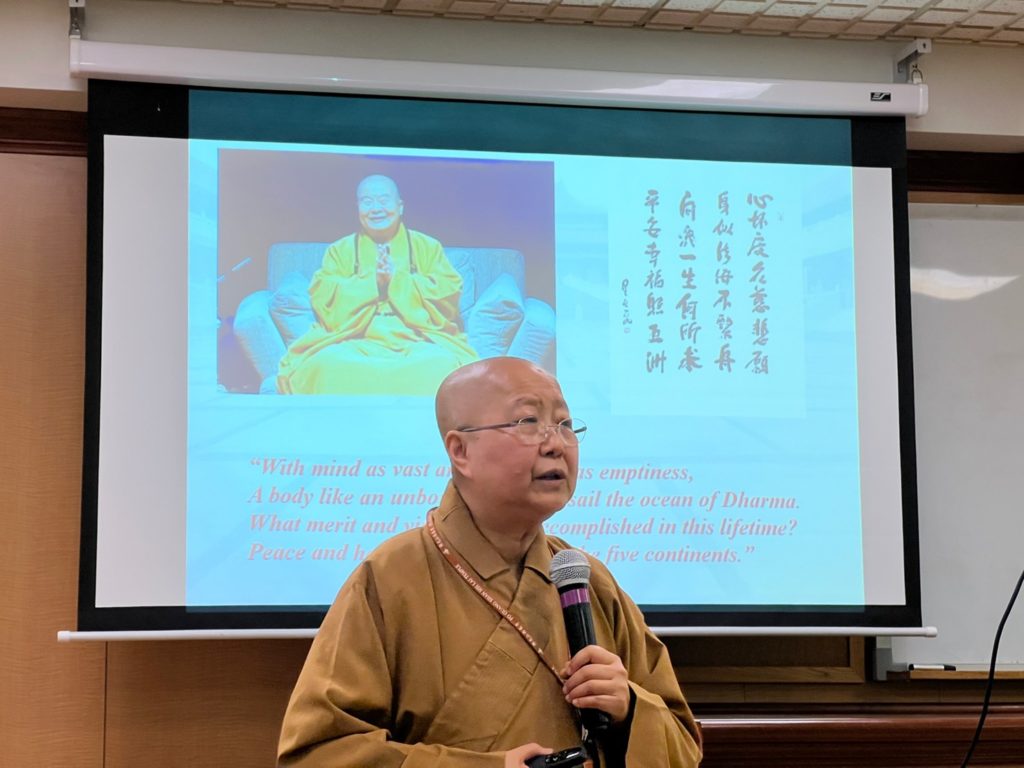
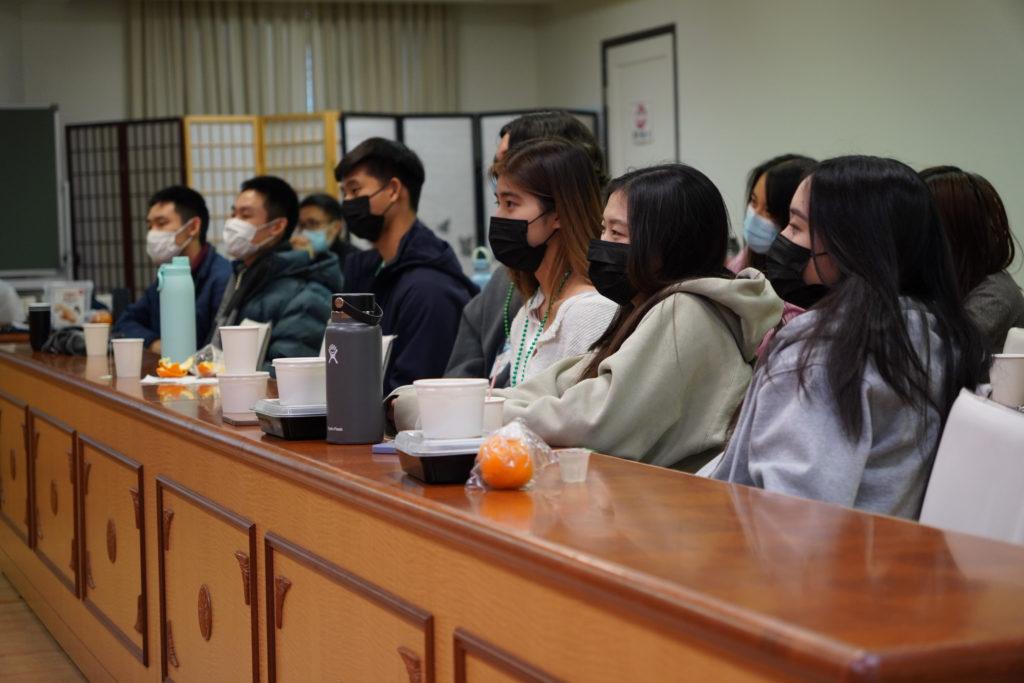
Throughout all the difficulties he faced, Venerable Master Hsing Yun has dedicated his life to propagating Humanistic Buddhism. He overcame all obstacles by always having compassion and loving-kindness to sentient beings, allowing the Buddha, Dharma, and Sangha to flourish.
With Venerable Master’s idea of
“Let the Buddha’s Light shine over three thousand realms. Let the water of Dharma flow through the five continents,”
over the years, we have established over 300 temples worldwide.
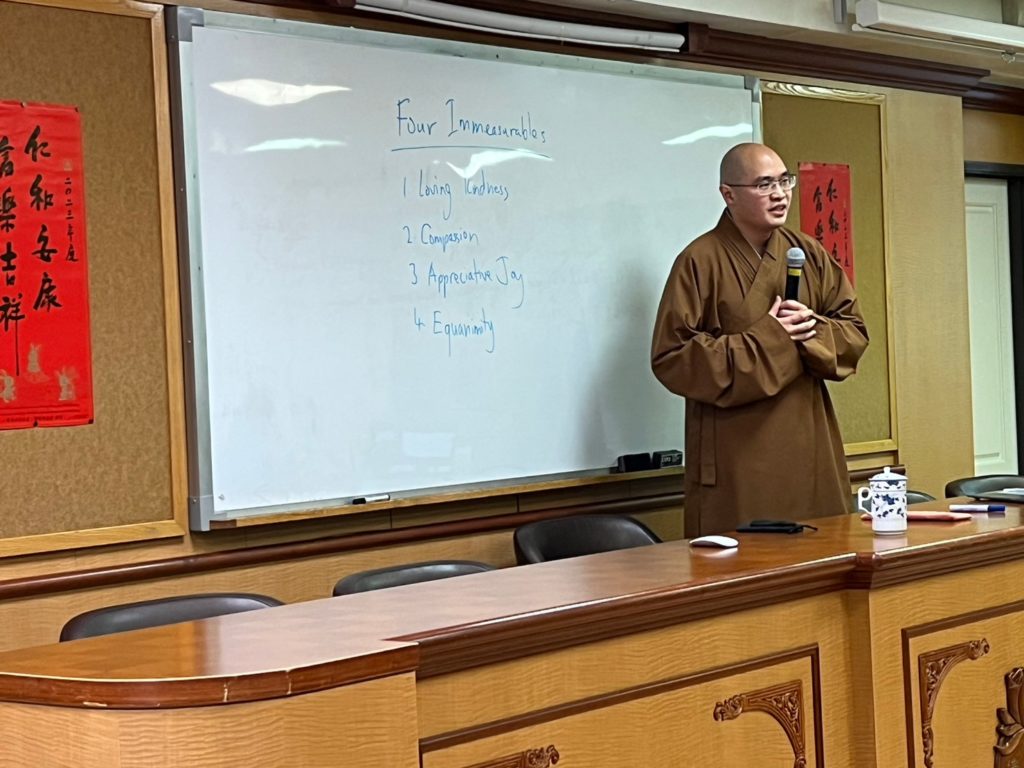
Venerable Hui Cheng, from the Social Education and Outreach department, gave a talk on Humanistic Buddhism’s perspective on the four immeasurables (loving-kindness, compassion, appreciative joy, and equanimity) and how they correspond with the Venerable Master’s four givings (to give others confidence, to give others hope, to give others joy, and to give others convenience): loving-kindness gives people confidence, compassion gives people hope, appreciative joy gives people joy, and equanimity gives people convenience.
Venerable Hui Cheng guided everyone to think about “Who am I?” in relation to these teachings. This question was then expanded to include how we are with personal relationships, how we can achieve unconditional love, and finally, how we can raise the emotional awareness within ourselves to rise above.
As a requirement of the scholarship, students were previously asked to read and then write a 1200-word essay on The Biography of Sakyamuni Buddha, written by Venerable Master Hsing Yun and translated by FGSITC. Then for the second workshop, each student was asked to create a 3-minute presentation on a selected topic from the book, to be performed in front of a small committee. It is FGSITC’S hope that these assignments will deepen the student’s understanding of the life of the Buddha.
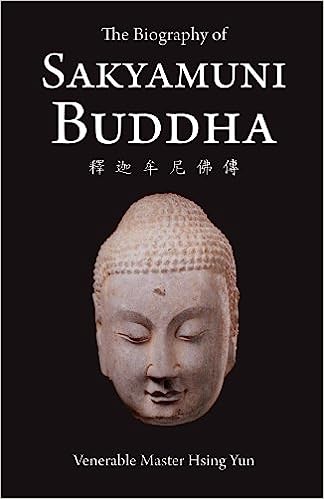
The essays were reviewed first and awarded top three placements: 1st place was awarded to Noah Wong (a student at the University of California, Santa Barbara). In his essay, he wrote about the Buddha’s life from practicing asceticism to enlightenment, especially the teaching of the Four Noble Truths. What stood out for him was the importance of patience illustrated by the story of Cudapanthaka: when the Buddha showed him patience and compassion, he found a new way to learn.
2nd place was awarded to Fionna Yuan (a student at the University of California, Los Angeles) & Kate Lam (a high school senior).
3rd place was awarded to Kristin Chieh (a student at Pomona College), Ramon Wang (a student at the University of California, Santa Barbara), & Hugo Sy (a student at Mount San Antonio College).
Hugo Sy reminisced that he started attending the Hsi Lai School at age 5 where he learned the Three Acts of Goodness, the Four Noble Truths, the Eightfold path, and other teachings. However, at that time he only understood the Three Acts of Goodness, so he thought the Buddha’s teaching was easy because it was only three things. Now, after reading The Biography of Sakyamuni Buddha, he has a deeper understanding of Buddhist philosophy, such as the teaching of patience, which will help guide him in his life.
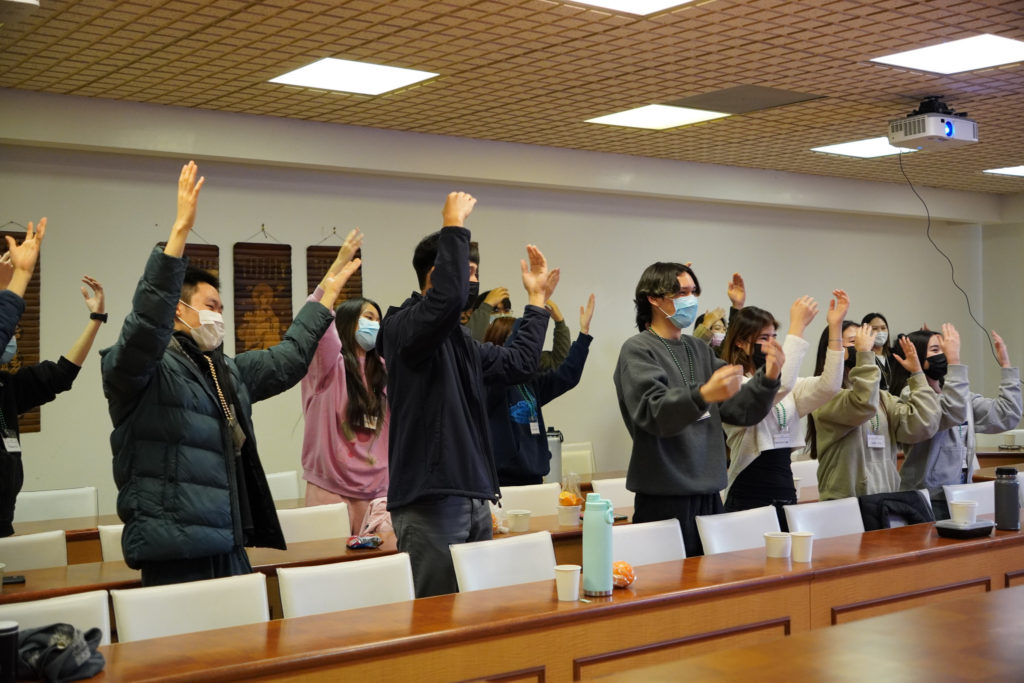
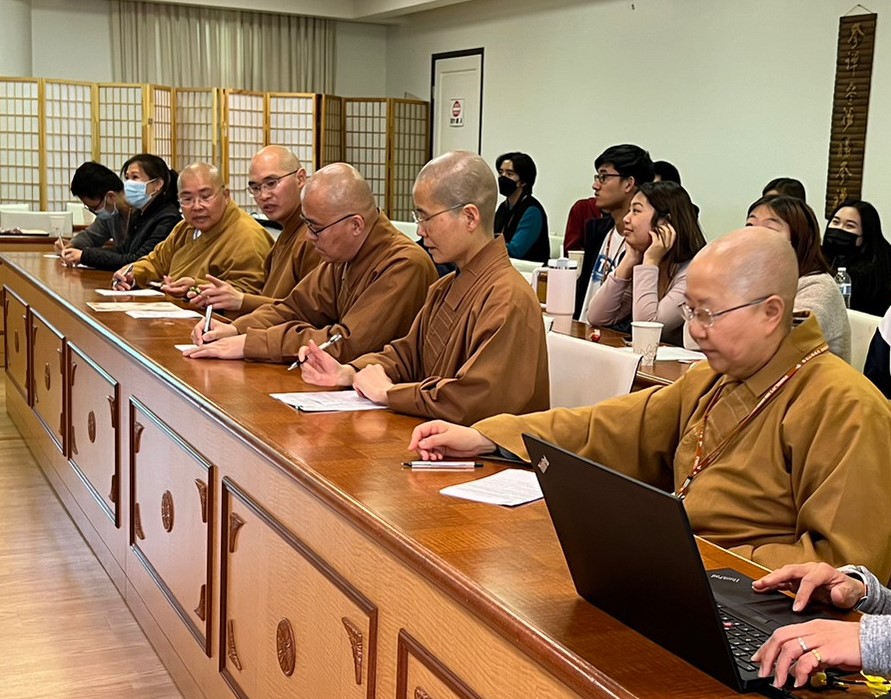
The final activity, the storytelling presentation, was the highlight of the workshop. The students surprised and delighted all with a host of creative interpretations, including skits, drawings, a puppet show, and even “Buddha the cat.” Everyone enjoyed the show, laughing and having a good time, even though some students admitted they didn’t expect there to be five Venerables in attendance, and with presentation evaluation forms that graded on preparation, communication skills, audience engagement, knowledge of the topic, and bonus points for visual aid material, the students were nervous and worried about their presentations being too informal. The limitless creativity exhibited with such a limited amount of time impressed everyone, especially Venerable Yi Chao, the director of FGSITC and the primary planner of the workshop. She praised the students and said she was amazed by their designs, preparedness, and creativity, and she hopes they will incorporate these teachings and ideas into their daily lives.
The storytelling presentation had three awardees: 1st place was awarded to Levana Sung (a student at the University of California, Riverside), 2nd place was awarded to Jiaxi Zhang (a high school senior), and 3rd place was awarded to Anthony Wang (a student at the University of California, Irvine).
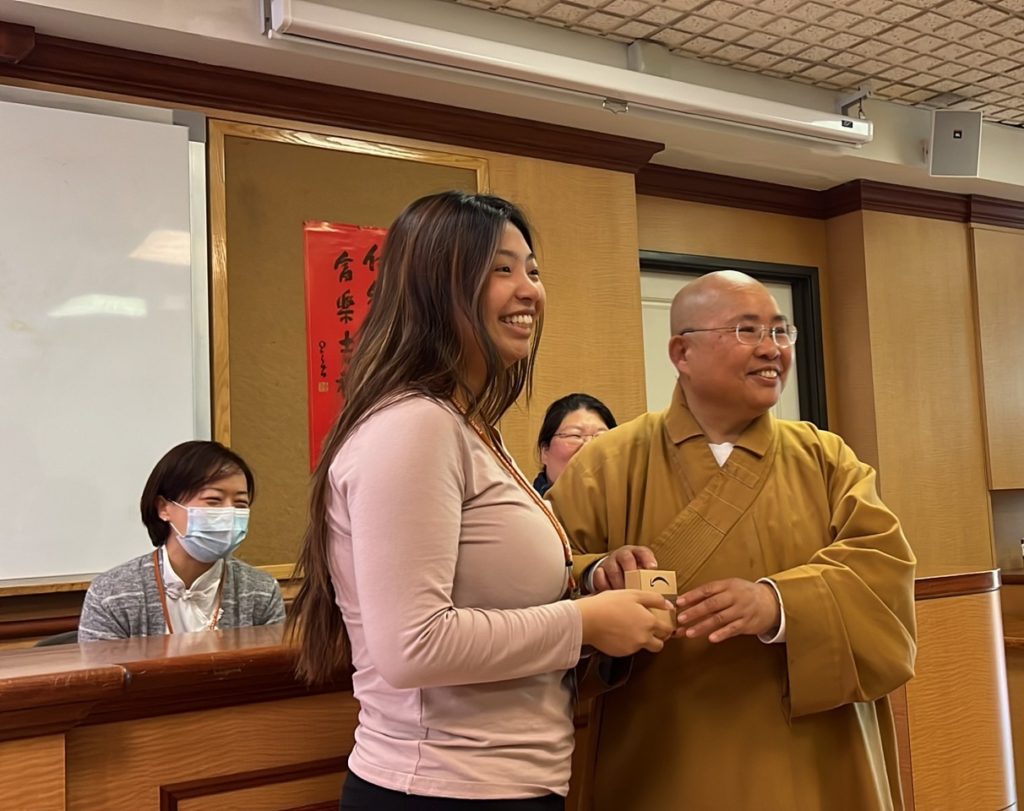
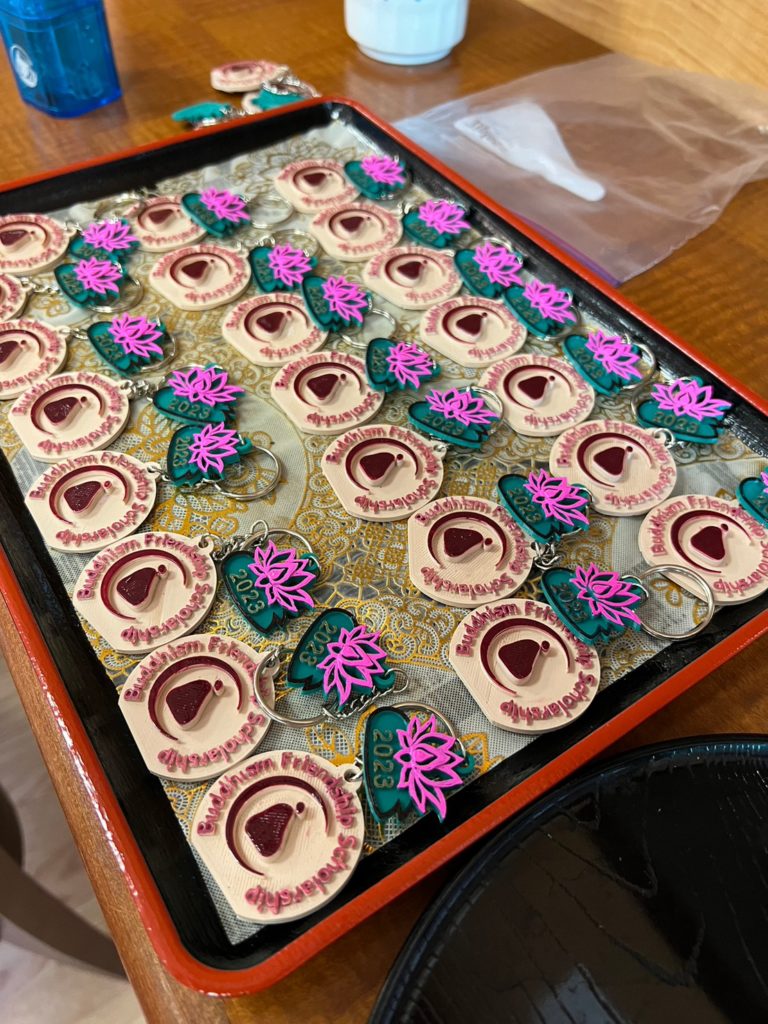
As for the talent contributions to FGSITC, the students are continuing to work on a wide variety of projects. Ryan Chu (a high school senior) brought his finished design to the workshop to share. He used 3D CAD/CAM (computer-aided design & computer-aided manufacturing) software to make a simple, yet elegant keychain, and everyone loved it!
Scholarship recipient Angelina Lee (a high school senior) lives near Hsi Lai Temple and also recalled attending the Hsi Lai School as a child. Her mother grew up in the United States and was never able to learn Chinese, but she wanted her children to the learn the language and beliefs of their grandmother so they could communicate with her, and she hoped to learn from as well. Angelina also said that when she was younger she only understood the Three Acts of Goodness, but after reading The Biography of Sakyamuni Buddha, she has learned about the Four Noble Truths, the Eightfold path, and the Twelve Links of Dependent Origination, and she now has a better understanding of them all.
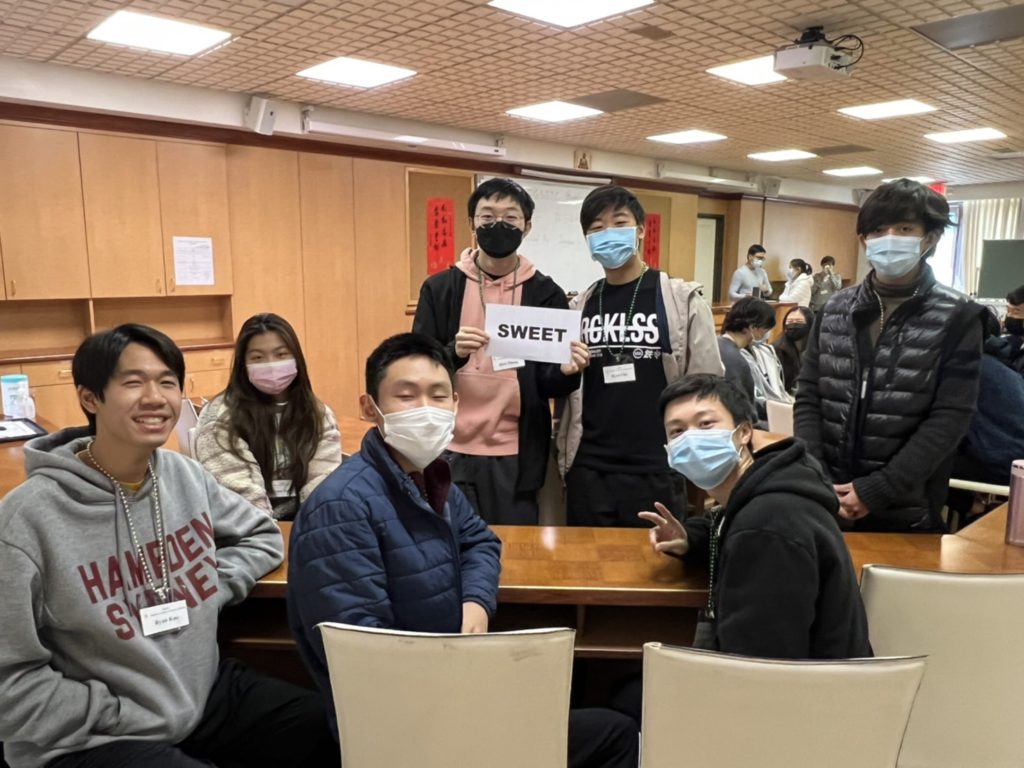
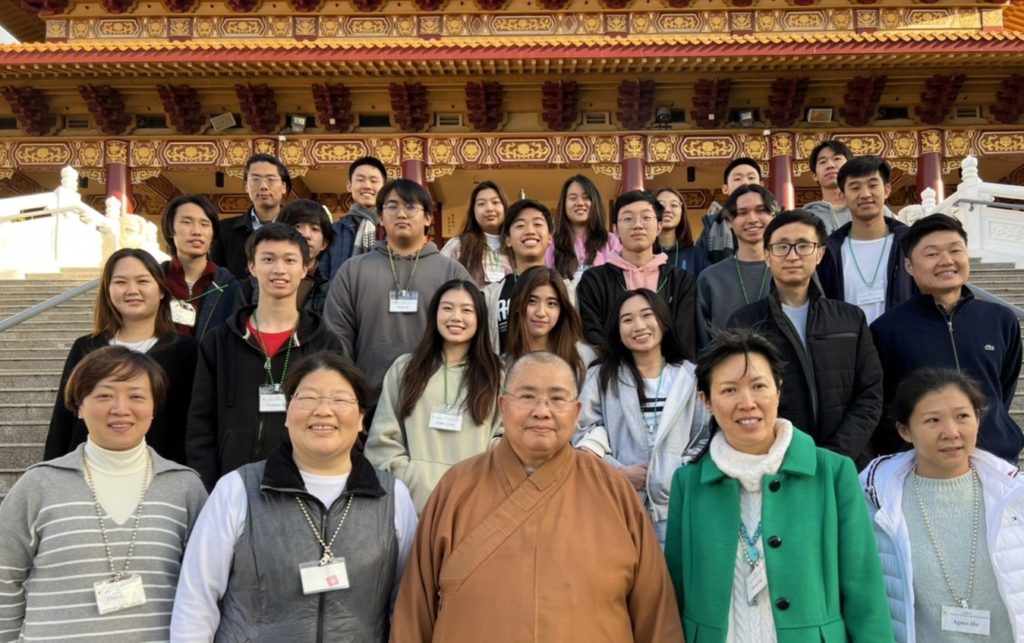
Venerable Yi Chao was really touched to see how the scholarship recipients have learned and grown from the experience:
“Even though a lot of time was spent on teaching materials and designing the program, it was worth it to see the seeds of Buddhist faith take root so that they can be passed on in the next generation. This is the direction we need to head in order to promote the localization of Buddhism.”
